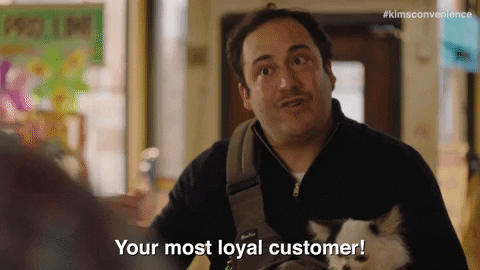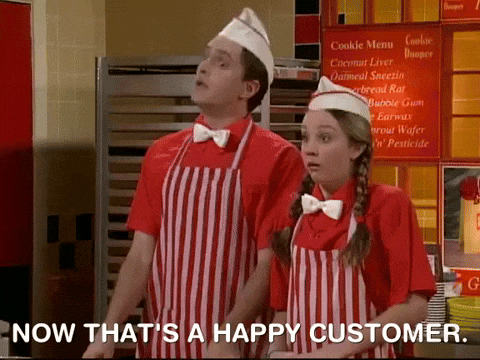The Importance of Personalization in Customer Experience: How Tailored Service Drives Loyalty
- Joan Eze-woko
- Nov 28, 2024
- 5 min read
In today’s hyper-competitive marketplace, customers are more discerning than ever. They’re not just looking for great products or services; they’re seeking brands that understand their unique needs and provide personalized experiences that make them feel valued. In this environment, personalization has become one of the most powerful tools in driving customer loyalty, satisfaction, and long-term success.
But what does it mean to personalize the customer experience, and why is it so important? More importantly, how can businesses implement personalized strategies that resonate with their customers and keep them coming back?
Let’s dive into the concept of personalization and explore why it’s a game-changer in the world of customer experience.

What is Personalization in Customer Experience?
Personalization in customer experience refers to the practice of tailoring interactions, offers, and services to individual customers based on their preferences, behaviors, and past interactions with your brand. This could involve anything from personalized recommendations and targeted marketing to custom product offerings and unique customer service experiences.
In essence, personalization transforms a generic interaction into one that feels relevant, specific, and personal. It’s about treating customers like individuals rather than numbers or transactions.
Why Personalization Matters More Than Ever
The digital age has given customers more choices than ever before. If they don’t feel valued by one brand, they can easily turn to another that’s more in tune with their needs. Personalized experiences have become essential for standing out in a crowded market, and here's why:
Customers Expect It: Today’s customers have grown accustomed to personalized experiences. From Amazon recommendations to Netflix suggestions, they are constantly surrounded by tailored content and services. According to a McKinsey report, 71% of consumers expect companies to deliver personalized interactions. If your business doesn’t meet these expectations, customers may perceive you as out of touch or unresponsive to their needs.
Personalization Increases Customer Satisfaction: Personalized experiences make customers feel understood and valued. When customers receive offers or content that’s relevant to their preferences, they’re more likely to engage, make a purchase, or return to your brand. A personalized approach creates a sense of connection, leading to higher satisfaction and more meaningful relationships.
It Drives Loyalty: Loyalty is built on relationships, and personalized service is one of the best ways to nurture that bond. When a customer feels like a brand truly knows them—whether through a personalized email, a product recommendation, or a tailored shopping experience—they are more likely to remain loyal. Loyal customers are more likely to make repeat purchases, recommend your business to others, and stay with your brand over the long term.

Personalization Boosts Revenue: The financial impact of personalization is significant. According to Epsilon, 80% of consumers are more likely to make a purchase when brands offer a personalized experience. By creating tailored offers, content, and experiences, businesses can not only increase sales but also raise the average value of those transactions.
Improves Customer Retention: Retaining customers is far more cost-effective than acquiring new ones. Personalization plays a critical role in retention by making customers feel seen and heard. If you continuously meet their needs and provide relevant experiences, customers are more likely to return, reducing churn and enhancing lifetime value.
How to Implement Personalization in Customer Experience
Now that we understand why personalization is so crucial, let’s explore how businesses can start integrating it into their customer experience strategies.
1. Gather and Analyze Customer Data
The foundation of any personalized experience is data. The more you know about your customers—what they like, what they’ve purchased, how they interact with your website—the better you can personalize your approach. Start by collecting data through various channels: website analytics, purchase history, surveys, social media interactions, and customer support interactions. Use this data to segment customers into different groups based on their behavior, preferences, or demographics.
For example, if you run an e-commerce store, you could use data to understand which products a customer frequently browses, their average spending habits, or how often they make a purchase. This information can help you craft highly personalized marketing messages or product recommendations.
2. Personalize Communication and Content
One of the easiest ways to personalize your customer experience is through communication. Whether it's emails, push notifications, or social media posts, personalization can make a huge impact on engagement. Personalize your outreach by addressing customers by name, referencing their previous purchases, or offering content relevant to their interests.
For instance, an email with a subject line like, "Hey [Customer Name], we thought you'd love this based on your last purchase!" is far more engaging than a generic "New Arrivals" email. Dynamic content that adapts to each user’s preferences will make your customers feel like you’re speaking directly to them, increasing the likelihood of them engaging with your message.

3. Offer Tailored Recommendations
If you're in retail or e-commerce, one of the most effective ways to personalize the customer experience is by offering tailored product recommendations. Use past browsing or purchase behavior to suggest items that are relevant to the individual. Amazon’s "Customers who bought this also bought" feature is a classic example of how personalization can drive further sales by presenting customers with products they are likely to be interested in.
You can also personalize recommendations based on a customer’s current stage in their buying journey. For example, offering complementary products or accessories after a customer purchases a specific item can enhance their experience and increase your sales.
4. Provide Customized Services and Experiences
Personalization doesn’t stop with marketing messages; it can extend to the services you offer. If you provide customer support, ensure that your agents have access to customer history, preferences, and past interactions. This allows them to provide a more tailored and efficient experience, without asking customers to repeat themselves or explain their issues from scratch.
You can also offer customized services, such as personalized delivery options or curated product bundles based on the customer’s needs. The goal is to make the experience feel seamless and unique to the individual.
5. Leverage Loyalty Programs for Personalization
Loyalty programs are a great way to both reward and personalize your customers' experiences. Create personalized rewards based on the customer’s purchasing history or engagement level. For example, offering a special birthday discount, or providing exclusive access to products based on a customer's purchase history, can make them feel appreciated and valued.
By integrating personalization into your loyalty programs, you can create a deeper sense of connection and encourage continued engagement from your best customers.
6. Continuously Optimize and Iterate
Personalization is not a one-time strategy; it’s an ongoing process. As customer behaviors and preferences change, your personalization efforts need to evolve as well. Continuously gather feedback, test new strategies, and refine your personalization tactics to ensure they’re always aligned with what your customers want and need.
Personalization is the Future of Customer Experience
In today’s customer-centric world, personalization is no longer a luxury—it’s a necessity. Customers expect brands to understand their needs and deliver tailored experiences that make them feel valued and heard. By prioritizing personalization, businesses can foster loyalty, boost satisfaction, and drive long-term success.
The key to successful personalization is knowing your customers and using data effectively to create unique, relevant, and meaningful experiences. With the right strategies in place, you can build stronger relationships with your customers and position your brand as one that truly understands them.
Remember, personalization isn’t about being perfect—it’s about being relevant. And when you’re relevant to your customers, you’ll earn their trust and loyalty for years to come.



Comments